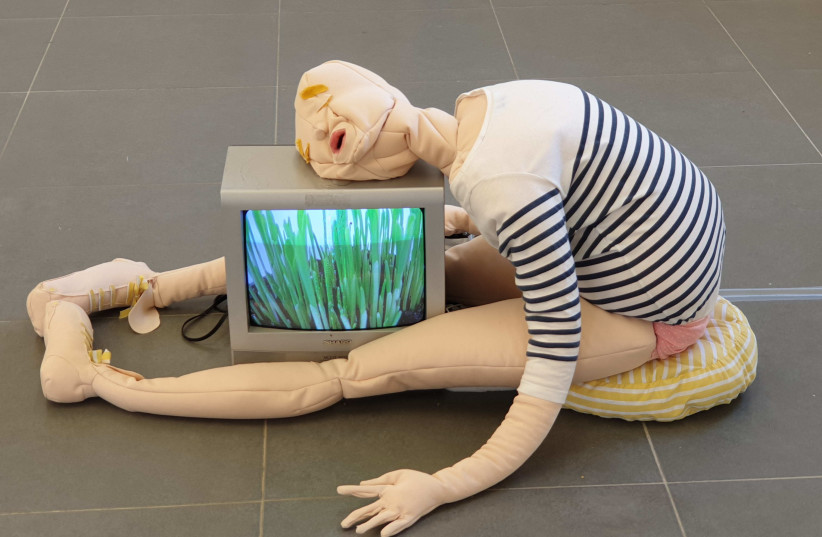In many ways, this summer has been a real game changer – some more obvious, some more subtle. One subtle change is that I am starting to have more and more face-to-face meetings. Subtle, but important.
Omicron/COVID is very much alive. This variant has hit hard. But rather than sheltering in place, mask on face instead of mask dangling from arm, a new fashion statement, people are meeting each other and even greeting each other as they once did. Hello hugs are no longer greeted with gasps. In fact, they almost, just almost, go un-noticed now.
One can evaluate the severity of the virus in any city or town by monitoring how many pop-up tests sites are open and operating on main streets and shopping malls. By my count, that number is dropping.
Without exaggerating, since Passover, every single family I know has been hit by COVID. Some families had been hit multiple times and some family members had contracted COVID twice, since Passover. Not COVID-rebound like President Joe Biden, just COVID, once again.
Recently, I had a meeting in a midtown-Manhattan, kosher, breakfast-style, greasy-spoon restaurant. It was busy and crowded. People were buying food and sitting close to each other. There’s no more social distancing at this restaurant. There are no more dividers in almost every Manhattan restaurant, diner or eatery. People come to eat, relax, catch up with friends and, like me, come to conduct meetings, just like the old days.

As this particular meeting was winding down, my meeting partner blurted out, “I am done with Zoom. Just finished! Enough! I hate Zoom and I will do anything not to have any more Zoom meetings.”
I can relate, as did the people seated at the next table, who smiled and nodded in agreement. It was an encapsulation of many people’s feelings about Zoom. While it was once a literal lifesaver, allowing freedom from isolation in a totally virtual way, today, Zoom is a totally exasperating experience.
Zoom and other similar programs have kept us alive during the pandemic. Before COVID, few people had heard of Zoom. Now, it is as ubiquitous as cell phones and iPads. Businesses were able to function because of Zoom. Schools taught or tried to teach via Zoom. Creative types figured out how to make Zoom best work for them in such a way that they were able to function and be productive. To share a virtual hug and a birthday visit. A visit with your doctor, lawyer and accountant. A connection with others.
But zoom is not the same as face-to-face. And even those who now prefer remote work to on-site, in-office work know and acknowledge the difference. One can be creative and work efficiently from home, but without the interaction, feedback and supervision that one gives and gets in an office, those water cooler conversations, it’s not the same.
Zoom has its upsides
On the upside, Zoom has the advantage of a mute button, while annoying, real-live, real-time co-workers do not.
Nothing can replace a face-to-face meeting. How do you read someone’s face if they are not there? Zoom worked when it needed to work and will continue to fill gaps when needed in the future. But real interaction needs to re-instated – and the sooner the better.
Our bubbies and zadies were right. While for many seniors Zoom was what kept them sane and kept them connected, they were among the first to cry out “Enough already!” It is the younger generation that is most enamored of Zoom.
The downside of Zooming was that it allowed and even gave a blessing to young people to further latch onto their beloved electronic devices. Zoom is their license to separate themselves from honest, human interaction. And some adults have caught on to their tricks.
On Zoom, you can throw up a still screen and use the system as a phone, which is the equivalent of turning your back to someone and continuing a conversation. To do this while Zooming is not considered rude behavior; it’s politely called multi-tasking. It’s really a state of being only partially checked-in.
I know that Zoom isn’t going away. It will probably never go away, only morph into a more advanced version of pseudo interaction and conversation. But I’m glad that we, as a human race, realize that Zooming is not the way we are wired for interaction and connectedness. We realize that it is a substitution and not the real thing.
As summer winds down and we prepare for the High Holidays, I hope that more and more people will decide to exchange their seat at their dining room table for their seat in synagogue or Temple. That rather than Zooming they will once again engage in schmoozing in face-to-face conversation with friends and family, after in-person services, of course.
The writer is a columnist, and a social and political commentator. Watch his new TV show Thinking Out Loud on JBS and read his latest book Thugs: How History’s Most Notorious Despots Transformed the World Through Terror, Tyranny and Mass Murder.
